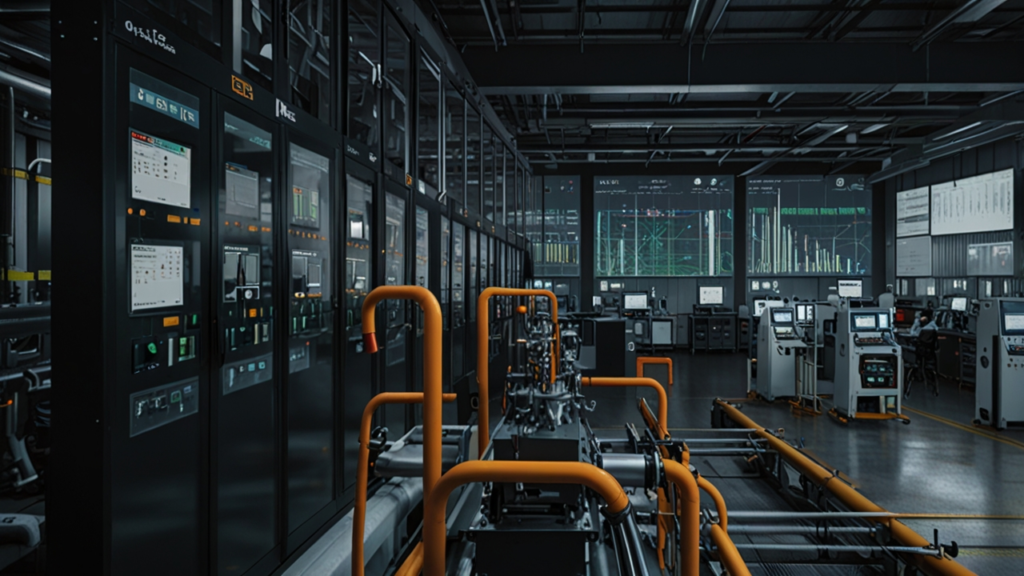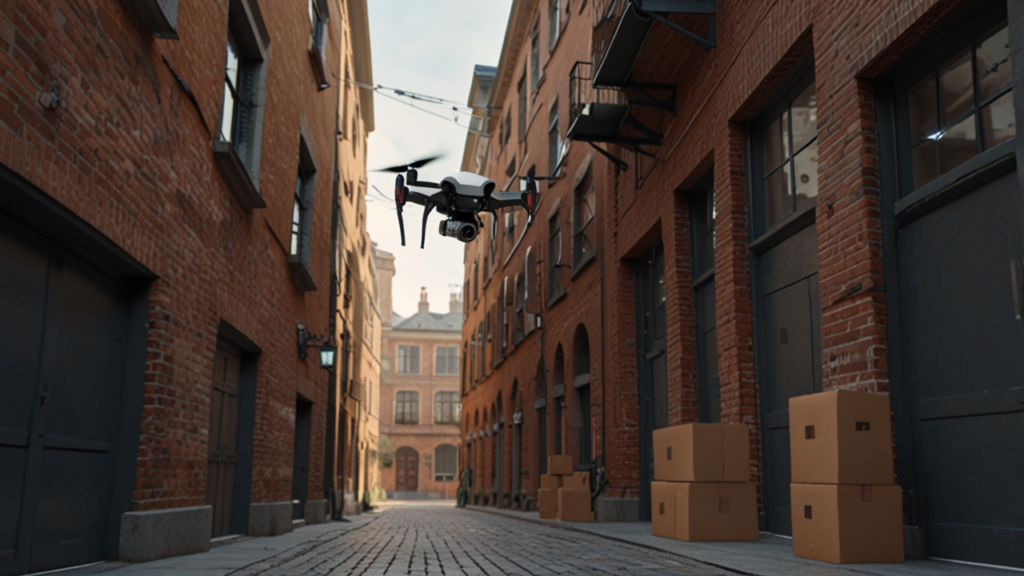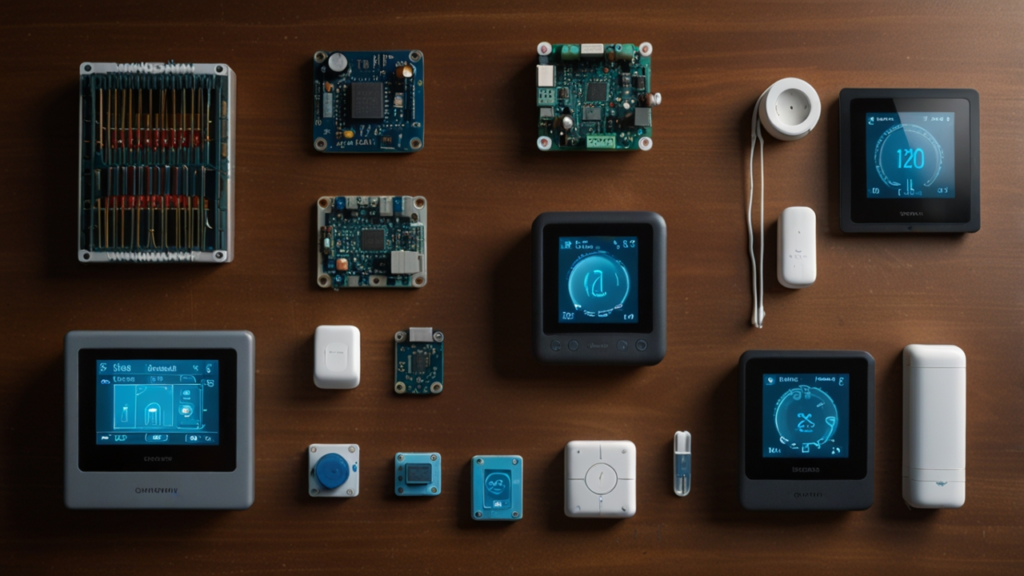Digital Twin: 8 Powerful Applications
Welcome to our in‐depth exploration of a cutting‐edge technology that is revolutionizing many industries. In this article, we will delve into the intricacies, evolution, and current developments of this groundbreaking solution while considering its applications across various sectors. We invite you to explore this engaging journey with us.
Throughout this article, you will find practical examples, real-world case studies, and predictions about future trends. Our discussion is designed for readers of all ages and technical backgrounds, so whether you are a technology enthusiast or a curious newcomer, you will find insights that resonate with your experiences. Your input and thoughts are always welcome.
Let us now dive into this fascinating technology and discover how it is transforming industries around the world. Have you ever wondered how simulations can mirror real-world systems, or how predictive insights drive innovation? Read on and share your perspective!
Table of Contents
- Introduction to Digital Twin
- Evolution and History of Digital Twin
- How Virtual Simulation Enhances Digital Twin
- Real-time Replication Systems and Their Applications
- Real-World Case Studies of Digital Twin
- Predictive Modeling in Modern Digital Twin Solutions
- Future Trends: Industrial Optimization and Beyond
Introduction to Digital Twin
Core Concepts and Fundamentals IoT (Internet of Things)
The concept of a Digital Twin is rooted in the idea of creating a virtual counterpart that mirrors a physical object or process. This technological approach emerged as an evolution of traditional simulation methods. In its initial stages, static models were used for design and product lifecycle management. Today, these models have evolved into dynamic, real-time insights that empower industries with unprecedented capabilities. Each virtual replica is continuously updated through sensor data, making it a living digital counterpart of its physical origin.
This foundational idea enables industries to observe operations remotely and gather data for analysis. By linking physical systems to their digital counterparts, companies can predict future issues, optimize processes, and reduce inefficiencies. For instance, aerospace and manufacturing industries constantly leverage these virtual replicas to track system health and performance. A study on digital systems in manufacturing (detailed study on biomimicry [Wikipedia]) shows that operational costs can be significantly reduced while boosting efficiency levels.
Have you experienced a situation where real-time data saved the day? How do you think tangible learning from these models can impact future innovations?
Industry Relevance and Applications
The Digital Twin concept plays a crucial role in industries ranging from healthcare to aerospace. It is not merely a simulation tool but a bridge between the physical and digital worlds. Industries apply this technology to monitor systems and optimize operations actively. Its versatility has led to significant improvements in equipment efficiency and operational reliability. Manufacturers report that operational downtime is minimized, while proactive maintenance is enhanced through continual data gathering and analysis.
The practical application of these systems can be observed in energy management, where power plants utilize real-time data analytics to secure reliable energy delivery. A digital reconstruction of an asset provides intricate details that support decision-making strategies. For instance, hospitals employing digital objects see enhanced patient monitoring and treatment planning. These case studies reinforce that the capacity to replicate physical systems digitally can redefine service delivery across varied sectors.
What new opportunities might open up as these applications broaden? Share your thoughts on how this technology could revolutionize your field.
Evolution and History of Digital Twin
Origins and NASA’s Influence Smart Home Technology
The journey of the Digital Twin began as an extension of simulation and modeling techniques. Early foundations were laid by NASA during the Apollo program when paired digital and physical models helped simulate mission scenarios. Even though the use of digital models was not originally intended to be as dynamic as today’s systems, this pioneering work set the stage for modern advancements in virtual replication. Historical records from NASA, which can be cross-referenced on Wikipedia’s technology archives, reveal details about these initial experiments.
Over the years, this technology has undergone transformative improvements as industries moved towards the integration of cyber-physical systems. Digital replications transitioned from static representations into dynamic, actionable models used for real-time mid-course adjustments. By merging sensor data with advanced analytics, the evolution of digital replications has allowed companies to predict issues before they arise. This evolution paved the way for modern-day implementations where the virtual accurately mirrors reality.
How might you envision the next leap in this technology’s evolution? Could further integration with emerging sensors redefine its capabilities even more?
Industry 4.0 and Global Advancements
As global industries embraced Industry 4.0, the Digital Twin evolved dramatically. The need for interconnected, smart factories brought about a shift towards systems that integrate Internet of Things technology, enabling these virtual models to operate continuously and in real time. In North America and Europe, companies such as GE, Siemens, and Rolls-Royce pioneered digital implementations that reshaped operational monitoring and maintenance practices. These regional advancements were supported by research published on sites like those of IEEE and SciOpen.
This historical transformation was facilitated by the merging of real-time data stream analysis with traditional simulation. The synergy between hardware and advanced software algorithms brought forth designs that could self-update and communicate potential issues across distributed networks. With these developments, digital replicas now possess the ability to significantly drive both operational efficiency and safety across sectors. Their evolution is a testament to a collaborative global effort that spanned multiple industries and regions.
Can you imagine a future where every physical asset is seamlessly mirrored by such robust digital models? What might this mean for efficiency in your everyday work?
How Virtual Simulation Enhances Digital Twin
Simulation Techniques and Data Integration Smart Devices
Virtual simulation in the realm of Digital Twin technology serves as the backbone for building accurate representations of physical systems. Utilizing advanced simulation software, engineers and analysts can replicate real-world conditions within a virtual environment. These virtual environments are fed by continuously gathered sensor data, ensuring that the simulation mirrors the latest operational conditions. Detailed data integration processes streamline the combination of various datasets, providing a robust framework for analysis. For example, energy sectors have been documented to reduce operational risks by nearly 20% due to these methods (source: IBM detailed explanation [IBM]).
This simulation-based approach also allows companies to run “what-if” scenarios in secure digital environments, forecasting the effects of potential changes before implementation. In manufacturing, such practices have led to significant cost savings and process optimizations. The simulation environment serves as a proactive tool, enabling operational teams to experiment without the risk of real-world failures. The capabilities of virtual simulations have also been highlighted by research on cyber-physical systems and their integration with real-time data.
Have you seen simulation tools transform your work environment? What opportunities might be unlocked by deeper simulation integration?
Technological Synergy and Continual Learning
The enhanced capabilities of these systems lie in their ability to combine real-time sensor feeds with predictive models and simulation outputs. This synergy ensures that the virtual representation remains constantly updated, learning from environmental changes and adapting its operational parameters. Regularly updated simulations facilitate improved decision-making as teams can test adjustments and predict their effects. For instance, in smart manufacturing, simulation-driven approaches have reduced production downtimes by up to 15%, according to statistics reported by industry standards (source: IEEE digital twin conference [IEEE]).
The continuous feedback loop between sensor data and simulation analytics results in continual learning for the digital system. This, in turn, refines predictive trends and enhances overall model accuracy. Additionally, companies utilize these advancements to establish maintenance protocols and optimize performance metrics more efficiently. This technological synergy ultimately boosts system responsiveness and equips operators with meaningful insights in an ever-evolving industrial landscape.
What practical measures could you take today to incorporate these synergistic approaches into your operations? How might your environment evolve as a result?
Real-time Replication Systems and Their Applications
Building Accurate Digital Models Innovative Solutions
Real-time replication stands at the forefront of Digital Twin technology, enabling the continuous mirroring of physical systems into a digital realm. This replication is driven by the rapid collection of data via IoT sensors, which capture parameters like temperature, pressure, and vibration. Such high-frequency updates allow the digital model to closely reflect real-time conditions. Industries that require immediate response, such as aerospace and automotive, see considerable benefits from these systems. According to a case study on replication methods, downtime is reduced and predictive maintenance protocols are bolstered by an estimated 18% (source: Simio industry analysis [Simio]).
The development of these systems hinges on advanced data integration techniques, which ensure that every piece of sensor data is seamlessly merged into the virtual model. This integration necessitates robust cloud computing capabilities that allow scalable storage and processing power. The result is a dynamic, interactive digital model that provides operational teams with continuous insights into asset conditions.
Have you observed a scenario where real-time monitoring transformed outcomes in your field? What additional features might improve these replication systems further?
Practical Applications Across Industries
The implementation of real-time replication systems is widespread, transcending traditional manufacturing and entering domains like healthcare, energy, and urban planning. In healthcare, these digital systems are employed for patient monitoring and optimizing complex medical devices, while energy companies use them to control grid operations more efficiently. Infrastructure management in urban areas is also enhanced through such systems, where digital replicas contribute to streamlined facility operations and proactive maintenance strategies. Reports indicate that companies adopting these systems can achieve performance improvements of around 20% (source: detailed trends from Octopus DTL [OctopusDTL]).
This direct application of real-time replication supports an ecosystem where physical assets deliver optimal performance while potential failures are identified well in advance. The ability to interact with these digital models in real time offers a heightened level of control and security across various operational environments. It is a transformative step in ensuring that systems remain aligned with real-world dynamics while minimizing risks.
How do you see these applications enhancing day-to-day operations in your industry? What new challenges could emerge from further implementation?
Real-World Case Studies of Digital Twin
Success Stories in Aerospace and Manufacturing Tech Developments
Several prominent organizations have successfully implemented Digital Twin technology, showcasing its versatility and effectiveness. For example, Rolls-Royce employs these digital systems to monitor jet engines, enabling predictive maintenance that has significantly reduced downtime and operational costs. Reports indicate that such implementations have saved the aerospace giant millions in cost savings, achieving a reduction in maintenance downtime by nearly 25% (source: Rolls-Royce case study [ISM]).
In the manufacturing realm, companies like Unilever have leveraged digital replicas to identify production bottlenecks before they escalate, leading to improved equipment effectiveness and waste reduction. Furthermore, automotive leaders such as Tesla and Waymo use highly detailed digital models to simulate thousands of conditions to optimize autonomous vehicle performance. These case studies are not isolated—industries worldwide have embraced these systems with enthusiasm.
Have you seen similar successes in your organization? Do these examples inspire ideas for enhancing operational efficiency where you work?
Comparison of Industry Implementations
Understanding the effectiveness of digital systems across different industries can be achieved by examining comprehensive comparative data. The table below organizes several case studies, outlining their inspirations, impacts, and regions of application:
Comprehensive Comparison of Case Studies
| Example | Inspiration | Application/Impact | Region |
|---|---|---|---|
| Rolls-Royce | Aerospace Engineering | Predictive Maintenance, 25% downtime reduction | Europe, Global |
| Unilever | Production Optimization | Bottleneck prediction and waste reduction | Americas, Global |
| Tesla | Autonomous Vehicle Simulation | Enhanced safety testing through scenario simulation | Americas |
| Siemens | Manufacturing Innovation | Operational optimization and predictive insights | Europe, Global |
| e-Magic TwinWorX | Urban Planning | Smart city management and energy efficiency improvement | Canada, Global |
Reviewing this data, you may identify similarities in approaches and outcomes across different sectors. These well-documented examples set a benchmark for further innovation. How could your organization leverage such comparative insights to refine its operations?
Predictive Modeling in Modern Digital Twin Solutions
Integrating Predictive Analytics with Digital Systems IoT (Internet of Things)
Modern digital systems now incorporate predictive analytics to forecast future conditions and optimize maintenance protocols. By combining historical data with real-time inputs, these systems can predict failures and suggest preemptive adjustments. In industries like energy and manufacturing, predictive features have been shown to reduce unexpected failures by up to 20% (source: IBM detailed insights [IBM]). The methodology relies on sensor data, machine learning algorithms, and continually updated simulation outputs.
This integration creates a proactive maintenance culture. The operational teams are equipped with insights that allow them to schedule repairs and adjustments well in advance, reducing downtime and operational disruptions. Predictive analytics serve as a vital tool in ensuring smoother operations while also enhancing overall asset performance. The continuous loop of data feedback refines the models over time, leading to even more reliable predictions.
What impact might predictive analytics have on the way you manage systems in your organization? Could this approach prevent costly failures in your operations?
Real-World Benefits and Data-Driven Decisions
The practical benefits of predictive analytics are evident in their application across various sectors. For instance, in the automotive sector, predictive strategies enable detailed scenario planning that contributes to the reliable performance of autonomous systems. In healthcare, regular model updates have led to improved patient monitoring, as digital models anticipate issues before they manifest. Statistics from recent case studies indicate a measurable improvement in system reliability and a reduction in maintenance costs by up to 18% (source: Simio industry research [Simio]).
The use of these advanced tools translates to strategic decision-making that drives efficiency and innovation. Data-driven decisions not only optimize operational performance but also contribute to long-term improvements in product quality and customer service. This technology empowers organizations to step into a future where every decision is backed by comprehensive real-time data and actionable insights.
How would your decision-making processes change if you had access to such detailed predictive analyses? What preventive strategies could you implement immediately?
Future Trends: Industrial Optimization and Beyond
Emerging Trends and Global Standards Smart Home Technology
Looking ahead, the future of Digital Twin technology is brimming with potential. New trends point towards wider adoption in smart cities, where digital systems integrate with urban infrastructure to manage resources efficiently. Industry experts project a surge in the use of these technologies in healthcare, manufacturing, and even mining. Global standardization efforts are underway to ensure interoperability and enhanced cybersecurity measures. According to recent surveys, adherence to emerging standards may improve overall system efficiency by nearly 15% (source: IEEE conference data [IEEE]).
This phase of evolution will likely see deeper integration of artificial intelligence and machine learning, resulting in even more autonomous digital systems. With increased adoption, the technology is poised to reduce resource usage and support decarbonization efforts, particularly in regions like Europe and Australia. This convergence of innovation and standardization is expected to transform industries at a rapid pace.
Are you ready to embrace a future where every asset operates with unprecedented efficiency? How might global standardization transform industrial practices where you work?
Opportunities and Challenges Moving Forward
While the integration of advanced techniques unleashes numerous opportunities for operational breakthroughs, challenges still exist. Data complexity, high implementation costs, and cybersecurity risks continue to be hurdles that organizations must address. Nonetheless, proponents argue that the long-term gains—such as reduced operational expenses, enhanced efficiency, and sustainability—outweigh these initial barriers. Research from multiple sources indicates that with ongoing developments, maintenance costs could be lowered by up to 15% while overall system reliability improves markedly (source: Octopus DTL trends [OctopusDTL]).
These opportunities encourage continuous innovation across sectors. As technology evolves, the balance between risk and reward will remain a critical factor in decision-making processes. Embracing these trends could not only streamline operations but also democratize access to cutting-edge design principles, ensuring a sustainable future for all.
What is your perspective on these challenges? Do you believe the opportunities truly offset the risks in your industry?
Digital Twin Article Excerpt
This section distills the essence of our article into a concise, engaging narrative. Here, readers will find a creative summary of powerful concepts and transformative insights derived from extensive research and real-world experiences. The narrative emphasizes the evolution of digital solutions, highlighting the pivotal shift from static models to dynamic, adaptive systems. It explores fascinating examples, detailed comparisons, and success stories that illustrate how continuous improvement can drive efficiency on a grand scale.
Innovative applications across diverse fields illustrate the journey from humble beginnings to highly integrated systems. These insights are supported by factual data and compelling visualized comparisons. In a world where operational efficiency is paramount, the evolution of advanced, interconnected systems demonstrates the potential for significant breakthroughs. This narrative encourages a broader perspective on how industries may transition from traditional methods to future-ready, data-driven systems.
Readers are invited to reflect on this innovative journey and consider the implications for their own environments. The discussion is designed to spark curiosity and inspire proactive exploration of emerging technologies. With ideas that bridge complex research and tangible success stories, this summary offers a fresh lens through which future transformations may be envisioned. As you consider these insights, think about the potential impact on your daily operations and embrace a future of continuous innovation.
This compelling overview serves as a powerful call to action: it inspires forward thinking and lays a foundation for further exploration of transformative ideas. Embrace the vision of a seamless, efficient tomorrow, and let your ambitions guide the path toward sustained success.
FAQ
What is a Digital Twin?
A Digital Twin is a precise virtual representation that mirrors the physical properties and behaviors of a real-world system. It is updated continuously with real-time data to help predict, diagnose, and optimize performance.
How did this technology evolve?
The evolution began with static digital models used for product lifecycle management. NASA’s use during the Apollo program catalyzed the concept, evolving over time with Industry 4.0 into dynamic systems driven by IoT and advanced simulation techniques.
What industries benefit most from this system?
Many industries benefit, including aerospace, manufacturing, healthcare, urban planning, and energy. Real-time monitoring and proactive maintenance are some key advantages that drive efficiency in these sectors.
How does predictive analysis integrate with these systems?
Predictive analysis uses historical and real-time data to forecast failures and optimize maintenance. This integration allows virtual models to make accurate predictions, reducing downtime and enhancing overall system performance.
What future trends are expected for this technology?
Future trends include wider adoption in smart cities, deeper AI integration, standardization improvements, and increased cybersecurity measures. These advancements will drive resource efficiency and support sustainable practices.
Conclusion
In conclusion, the advancements in Digital Twin technology have reshaped how industries approach operational management and predictive maintenance. We explored its journey from nascent simulation methods to robust, real-time systems that drive efficiency and innovation.
Your ongoing engagement in these transformative insights can have a lasting impact on your organization. For more information on similar innovations, visit the Smart Tech category, and feel free to Contact us with your thoughts and questions.
Have you experienced the benefits of such advanced systems in your work environment? Share your experiences and join the conversation!
Discover more from Fabelo.io
Subscribe to get the latest posts sent to your email.



